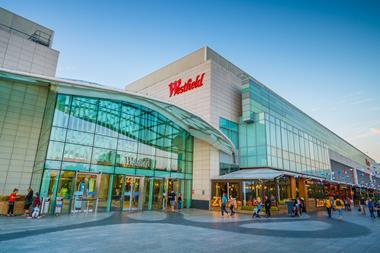With Messrs Branson and Musk now offering joyrides into orbit for a mere £200,000 or so, you could be forgiven for thinking that the ‘space race’ is over.

But for the heavyweights of UK retail back here on Earth, that mission is far from complete. With millions of square feet in shopping centres, retail parks and outlets, much of it threatened by the rise of online shopping, space remains a perpetual concern.
Way back before the millennium, size was everything and supermarket giants served up supersized superstores in out-of-town and edge-of-town locations. Fast-forward to 2022, and grocery delivery has never been more ubiquitous and convenience is the order of the day. Now it’s not how big your store is but where it is and what you do with it that counts. How does a retailer persuade shoppers who no longer have to frequent their premises that they actually want to?
IWG and Tesco have an idea. In a deal announced this week, the JV unveiled a co-working space in the retailer’s Tesco Extra store in New Malden, featuring flexible working facilities such as wifi, hotdesks and a meeting room provided by IWG. In their view, today’s growing crop of hybrid workers will be eager to seize the opportunity of working while – and where – they shop. IWG chairman Mark Dixon suggested his company had a taste for supermarket working that would become more apparent in the coming months.
By contrast, Morrisons’ latest contribution to the space race is built on the premise that smaller stores are more beautiful. The UK’s fourth-largest supermarket chain has just acquired local convenience chain McColl’s in a pre-pack deal – promising to retain both its 1,100 stores and 16,000-strong workforce.
Meanwhile, spring is in the air (allegedly) and Shaftesbury and Capco will be hoping that hordes of punters flocking to the bright lights of Soho and the West End will get their £3.5bn mega-merger off to a flying start. The deal that brings much of Chinatown, Soho and Covent Garden’s retail and office space under single ownership was forged in the depths of the pandemic, and promises – overseas tourists and exchange rates willing – a brighter future for what will be one of the UK’s largest listed property entities.
The office market too is in flux, as the latest insights from Knight Frank indicate. Thanks to the booming life sciences sector, the firm estimates that 5m sq ft of high-quality office space will be delivered in Oxford and Cambridge over the next five years.
Finally this week, what of that other perpetual property poser, the housing shortage? Housing secretary Michael Gove initially appeared to entirely reject the ‘Procrustean bed’ (presumably not the kind sold by Tesco) of housing targets on the Today Programme.
This was later scaled down by the inevitable spokesperson into a milder admission that the longstanding 300,000-new-homes-a-year figure would not be reached “this year”. A move that looks like either simple realism – the target was elusive even before material prices and supplies were thrown into chaos – or unbridled political spin. Time may show us which.





























No comments yet